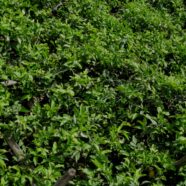
China sent shock waves through the global recycling market this year when it announced it would no longer be accepting poorly sorted or dirty shipments of recyclable waste from foreign exporters.
It’s estimated that more than 800,000 tonnes of recyclables or scrap have been rejected since February via Operation Green Fence, China’s first major campaign to enforce its stringent waste quality legislation. This has caused chaos at some ports, where Chinese customs officials conducting rigorous checks have suspended the import licences of 247 companies.
As western exporters scramble to ensure the commercial viability of this dynamic market, worth $5bn (£3.2bn) annually in plastic scrap alone, will this new crackdown prompt a wave of sustainable recycling innovation in the west?
China’s demand for low-cost recycled raw materials has meant waste shipments from Europe, the US, Japan and Hong Kong have arrived thick and fast, with scrap becoming the top US export to China by value ($11.3bn) in 2011.
China controls a large portion of the recycling market, importing about 70% of the world’s 500m tonnes of electronic waste and 12m tonnes of plastic waste each year. Sudden Chinese policy changes therefore have a significant impact on the global recycling trade, which puts pressure on western countries to reconsider their reliance on the cost-effective practice of exporting waste, a habit that’s reinforced by a lack of domestic recycling infrastructure and a lower demand for secondary raw materials.
While a full industry snapshot has yet to emerge, China’s recyclers are thought to largely comprise small-scale, often family-owned, low-technology firms, according to David Newman, president of the International Solid Waste Association (ISWA), who says that the low visibility of Chinese recycling methods casts doubts over western recycling rates. In particular, it’s feared that a lack of regulation means unsound techniques go unchecked, resulting in acid pollution of land and waterways, emissions of toxic fumes from burning and poor health among workers.
China’s 10-month-long Operation Green Fence campaign has set a limit of 1.5% of allowable contaminant for each bale of imported recyclables (including materials such as metal, plastics, textiles, rubber and recovered paper). In the first three months, containers piled up as 55 shipments were halted and 7,600 tonnes of recyclable materials rejected, says ISWA.
There are reports of jittery traders shipping lower volumes of waste, traders selling their scrap to countries such as Vietnam, Indonesia, and Malaysia and rejected shipments being landfilled, although the Department for Environment, Food and Rural Affairs says it’s not aware of any waste shipments having been returned to the UK’s shores.
“Operation Green Fence sends an alarming signal regarding thesustainability of an export-based recycling system,” says Newman. “We must think twice about the costs and benefits of exporting recyclables to developing countries and identify the consequences along the value chain of a monopoly market player like China.”
A wave of innovation and investment in recycling technology is needed to catalyse successful domestic recycling markets in the west, according to Mike Biddle, plastics recycling pioneer and founder of MBA Polymers. This could include more sophisticated handling and treatment techniques and more high-technology processing plants.
However, creating the right market conditions for domestic recycling to thrive will require government support.
Environmental services firm Veolia UK recently invested £5m in a cutting-edge plastics recycling facility in Essex and wants to invest £1bn in UK recycling infrastructure over the next six years. With planning permission a major obstacle, MPs must take action to incentivise investment, says Richard Kirkman, Veolia’s technical director.
Smarter waste management and tighter import and export controls have an important role to play in increasing waste quality. The development of a common set of criteria for major scrap materials is vital, according to the Bureau of International Recycling (BIR). It has recently published guidelines on environmentally sound waste management to help educate players in the global recycling market. In the UK, Defra is introducing new regulations this autumn requiring recycling facilities to measure the quality of recyclables.
As designing with reuse in mind is increasingly recommended by circular economy thinkers, manufacturers must be a lot more proactive in creating sustainable designs and specifying recycled materials over virgin raw materials. Tapping into the 10m tonnes of plastic waste discharged into the sea each year is just one option, an approach adopted by Electrolux and Ecover.
Investing in end uses for secondary raw materials is critical to the realistic expansion of western recycling facilities, says Bob Ensinger of US trade association the Institute of Scrap Recycling Industries.
In the US, the EPA has created a sustainable materials management road map to 2020 and says education and stronger public and private partnerships are required to advance recycling, reuse and waste reduction. Yet despite this, a new recycling plant hasn’t been opened in the US since 2003.
While in the short to medium term, exporting waste abroad looks set to continue, a real focus on recycling innovation and sustainable design could boost western recycling industries and economies. Importantly, this would be a good alternative to cultivating too heavy a dependence on fragile global recycling markets and recyclers in developing countries.
A Defra spokesperson commented: “We are recycling more in the UK than ever before and we want to see our own industry take full advantage of this to create jobs and economic growth.”
This article was originally published on the Guardian Sustainable Business site.

